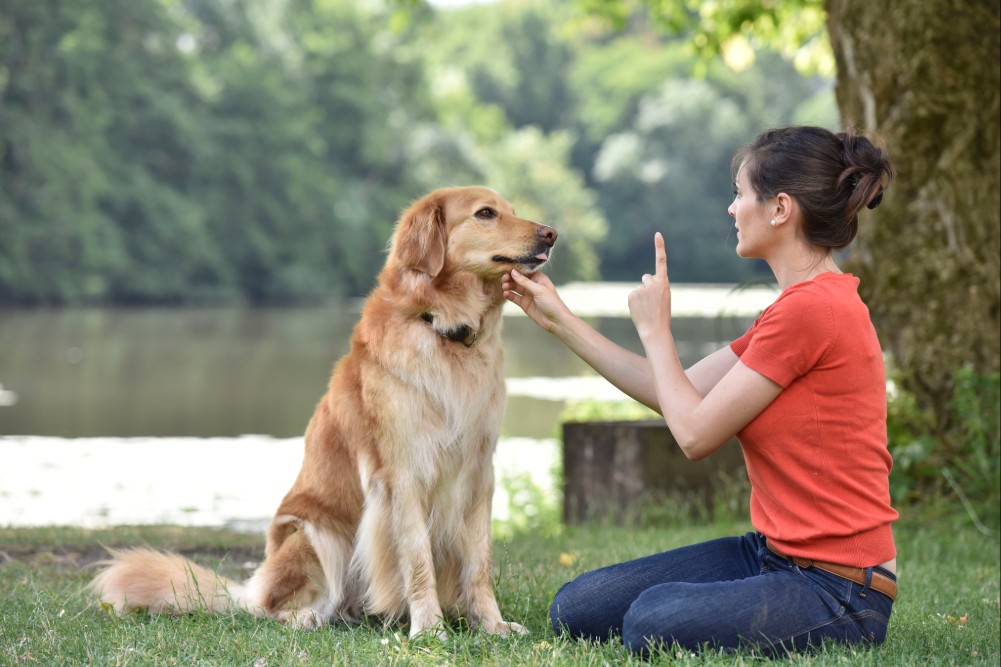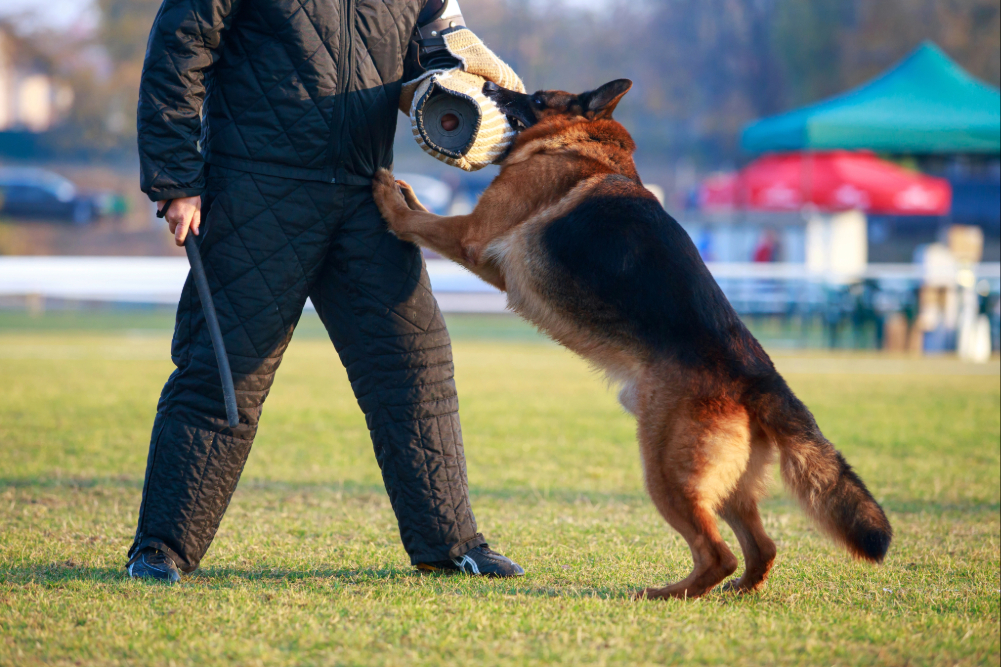
You want a dog who listens, behaves, and blends easily into your day. The question is how to get there. Do you let professionals take the lead for a while, or do you work through the training process together at home?
Board-and-train and private lessons both deliver results. However, the experience, pace, and level of owner involvement are completely different. Here’s a look at what each option really offers, and how to choose the one that fits your life.
What Board and Train Really Means
Board and train dog training is an immersive format where a dog stays with a trainer for a set period, often two to four weeks for foundational skills and longer for behavioral goals. Days follow a clear rhythm: short training sessions, rest time to let new habits settle, and real-world outings to practice where it matters.
Since the trainer manages every rehearsal, good behaviors compound quickly while problem patterns lose momentum. Think of it as a training retreat designed to build progress fast.
What Private Lessons Really Mean
Private lessons are one-on-one coaching sessions at home, on everyday walking routes, or in public spaces that mirror your lifestyle. The trainer works with both ends of the leash: the dog learns skills, and the human learns timing, handling, and how to create successful setups.
Between visits, owners practice short homework reps that blend into daily routines. This approach builds fluency where issues occur and steadily grows handler confidence. It also helps families recognize progress, troubleshoot challenges, and reinforce calm behavior in real-world environments with consistency and clarity.
Board and Train vs. Private Lessons: A Comparison
How Each Path Feels Day to Day
In board and train, mornings may begin with a calm door routine and a focused walk, followed by short leash-manner drills or “place.” Midday includes rest, then a structured public outing to a store or street to reinforce skills under distraction. Evenings return to house manners, relaxed handling, and polite thresholds. The trainer balances the challenge so the dog gains many clean repetitions without overwhelm.
In private lessons, the work lands exactly where life does. One visit may be at the front door, installing a “go to mat and settle” routine while a family member plays the guest. Another session might be on the sidewalk two houses down, practicing gentle arcs and paid check‑ins on the very stretch that usually turns chaotic.
Homework is brief but frequent: two minutes of “place” before meals, a few paid check‑ins on every walk, a one‑minute door rehearsal in the evening. Training becomes part of the day, not a special event.
Speed vs. Staying Power
Immersion typically delivers faster early change thanks to daily practice and carefully managed challenge. It works well for impulse control, leash skills, and dependable settling. A strong handoff lesson, written and video guides, and follow-up coaching keep households running the same plan so progress carries forward.
Private coaching for dogs tends to move at the household’s pace. It can feel slower up front, but durability is strong because behaviors are forged in the exact contexts that matter. Owners gain skill as they go, which pays dividends long after lessons end.
Owner Involvement: Front‑Loaded vs. Steady
Board and train front‑loads trainer effort. Owners step in at pickup to learn the system and then keep it consistent at home. This route helps when schedules are packed or frustration is high and momentum is needed. The trade‑off is that maintaining gains still depends on the owner’s follow‑through after the program.
Private lessons spread owner involvement evenly from day one. Short daily practice and small environmental tweaks lead to steady progress. This suits people who want hands‑on learning and are ready to fold training into routine.
Training Environment: Controlled vs. Contextual
Board and train leverages controlled, real‑world setups chosen by the trainer. That allows careful progression—quiet neighborhoods first, then slightly busier paths, then public spaces—without overwhelming the dog. It is a strong match for dogs who benefit from structure and for goals that need early wins without constant surprise.
Private lessons tie every rep to daily life. Door routines are taught at the actual door that guests use. Leash skills are built on the block that the dog walks every day. Fence‑line issues are addressed at that fence, at a distance the dog can handle, then closed gradually. Proof is built in from the start.
Which Dogs Benefit Most from Each
Board and train fits adaptable, social dogs who settle well in new environments, families with limited training time, and goals that need a clean reset – leash chaos, impulsive greetings, door dashing, scattered manners. It also helps when a lot of clean repetitions are needed quickly to change entrenched habits.
Private lessons fit sensitive dogs who prefer familiar spaces, households that want to be deeply involved, and context‑specific issues. It can be difficult with visitors to an apartment, struggles on a particular block, routines that unravel only at certain times. It is ideal for owners who value learning the craft and can commit to brief, regular practice.
How Results Transfer Home
After immersion, the first two weeks at home matter most. Keep the routine simple and close to what the dog trainer used: structured walks with paid check‑ins, regular “place” during family activity, measured freedom based on calm choices, and a straightforward door routine. Book follow‑ups early to catch small snags while they are small.
With private lessons, transfer is baked in. Still, consistency across family members matters. Use the same words for the same cues, agree on rules, and log brief notes after sessions—distance from distractions that allowed easy focus, recovery time after surprises, and one small win to repeat tomorrow.
A Simple Framework to Decide
- Goals: List five daily friction points. Next to each, write what the dog should do instead. If that picture feels fuzzy, a jump‑start can clarify and build it quickly. If it is clear, private coaching can install it where it matters.
- Dog profile: Adaptable and social dogs often cruise in immersion; sensitive or easily overwhelmed dogs may prefer home‑first work.
- Schedule: If mornings and evenings are packed, immersion lowers pressure; if brief daily windows exist, private homework fits well.
- Budget: Compare the upfront investment of immersion with the spread‑out costs of lessons, along with the hidden costs of delay – damage, safety risks, and stress.
Making Either Choice Succeed
- Start at levels where success is easy, then raise the challenge in small steps.
- Pay the first signs of calm: soft eyes, a breath out, a head turn back to the handler.
- Protect new habits for two weeks before adding novelty.
- Use follow‑ups. Early tweaks keep little snags little.
Controlled K9: Give Your Dog a Real-world Reset
At Controlled K9, our board and train programs in Virginia place dogs in a trainer’s home for immersive, daily training that mirrors real life.
Dogs live as family, practicing house manners, loose‑leash walking in the neighborhood, calm behavior in public, and polite interactions with people and pets. Owners stay involved through daily photo and video updates, plus a detailed handoff so new skills stick at home.
The standout: unlimited private follow‑up lessons for life at no extra cost, so support never runs out. From reactivity and aggression to anxiety and nonstop barking, each plan is custom‑built around a dog’s age, temperament, and goals.
Ready for lasting change and a calmer routine? Call or send a message to schedule an in‑person evaluation and get a tailored Board and Train plan.




Comments